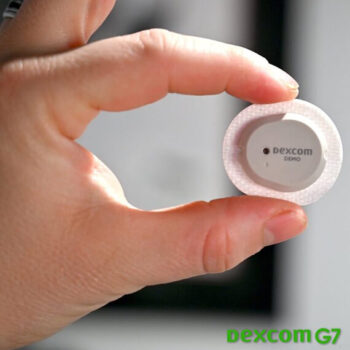Table of content
Introduction
Living with diabetes comes with its set of challenges and effective blood sugar monitoring is a crucial aspect of managing this condition. With the ever-evolving landscape of healthcare technology, choosing the right blood sugar monitor can be overwhelming. In this comprehensive guide, we will explore the world of blood sugar monitors, discussing their types, features, and factors to consider when selecting the one that best fits your needs.
Types of Blood Sugar Monitors
1. Traditional Blood Glucose Meters:
These portable devices require a small blood sample obtained by pricking the fingertip. They provide quick and accurate results, making them a popular choice for many individuals managing diabetes.
2. Continuous Glucose Monitoring (CGM) Systems:
CGM systems offer real-time monitoring by using a small sensor placed under the skin to measure glucose levels continuously. This technology provides a more comprehensive view of glucose trends throughout the day and night.
3. Flash Glucose Monitoring (FGM) Systems:
FGM systems use a small sensor worn on the skin to measure glucose levels continuously. Users can obtain glucose readings by scanning the sensor with a reader device, eliminating the need for routine fingerstick tests.
Factors to Consider When Choosing a Blood Sugar Monitor
1. Accuracy:
Look for a monitor with high accuracy to ensure reliable Blood Sugar Monitors. Read user reviews and consider professional recommendations.
2. Ease of Use:
Consider the simplicity of the device, especially if you or someone you’re helping has limited dexterity. Features like large buttons, backlit screens, and audible alerts can enhance usability.
3. Cost:
Evaluate the overall cost of the monitor, including the device, test strips, and other accessories. Some monitors may have a higher initial cost but lower ongoing expenses.
4. Data Storage and Connectivity:
Choose a monitor that stores and organizes your glucose data efficiently. Many modern monitors can sync with mobile apps or computer software, allowing you to track and share your data with healthcare providers.
Conclusion
Selecting the right blood sugar monitor is a personal decision that depends on your lifestyle, preferences, and specific health needs. Whether you opt for a traditional blood glucose meter or embrace the continuous monitoring technology of CGM or FGM systems, the key is to find a solution that integrates seamlessly into your daily routine. Regular monitoring empowers you to take control of your diabetes, allowing for timely adjustments to your treatment plan and promoting overall well-being.
Frequently Asked Questions
What is a blood sugar monitor, and why is it important for individuals with diabetes?
A blood sugar monitor, also known as a glucose meter, is a device that measures the concentration of glucose in the blood. It is essential for individuals with diabetes to monitor their blood sugar levels regularly to manage their condition effectively. Monitoring helps in making informed decisions about medication, diet, and lifestyle to maintain blood sugar within a target range.
How often should I check my blood sugar levels?
The frequency of blood sugar monitoring depends on individual circumstances and the type of diabetes. In general, people with diabetes may need to check their levels multiple times a day, especially before meals, after meals, and before bedtime. Your healthcare provider will provide specific guidance based on your unique needs.
What are the different types of blood sugar monitors available?
There are traditional blood glucose meters that require a fingerstick blood sample, continuous glucose monitoring (CGM) systems that provide real-time data through a sensor under the skin, and flash glucose monitoring (FGM) systems that offer on-demand readings by scanning a sensor.
How accurate are blood sugar monitors?
The accuracy of blood sugar monitors can vary. Most modern devices are highly accurate when used correctly. It’s crucial to follow proper testing techniques, regularly calibrate continuous monitoring systems, and consult with healthcare professionals to ensure accurate readings.
What factors should I consider when choosing a blood sugar monitor?
Consider factors such as accuracy, ease of use, cost (including ongoing expenses like test strips), data storage and connectivity features, and the overall compatibility with your lifestyle. Consulting with your healthcare team can also help you make an informed decision.
Can I use a blood sugar monitor to adjust my medication or insulin dosage?
Blood sugar monitors are valuable tools for tracking your glucose levels, but any adjustments to medication or insulin should be made in consultation with your healthcare provider. They can interpret the data and help you make informed decisions about your treatment plan.
Are there blood sugar monitors with additional features, such as connectivity to smartphones?
Yes, many modern blood sugar monitors offer features like Bluetooth connectivity, allowing them to sync with smartphone apps. This connectivity facilitates data tracking, trend analysis, and sharing information with healthcare providers.
How do continuous glucose monitoring (CGM) systems differ from traditional glucose meters?
CGM systems continuously monitor glucose levels throughout the day and night, providing real-time data and trends. Traditional glucose meters require manual blood samples and provide a snapshot of glucose levels at a specific moment.
Are there any insurance coverage options for blood sugar monitors and related supplies?
Many health insurance plans cover blood sugar monitors and necessary supplies, but coverage can vary. It’s advisable to check with your insurance provider to understand your specific coverage and any requirements for reimbursement.
Can children use blood sugar monitors, and are there specific devices designed for pediatric use?
Yes, children with diabetes can use blood sugar monitors. Some devices are designed to be user-friendly for children, with features like colorful displays and smaller lancets for less discomfort during testing. Consult with your healthcare provider to determine the most suitable option for your child.















This website is amazing. The excellent content demonstrates the creator’s passion. I’m in disbelief and hope to see more of this incredible content.